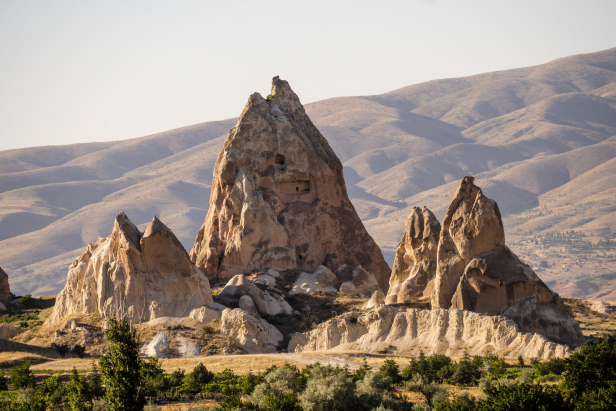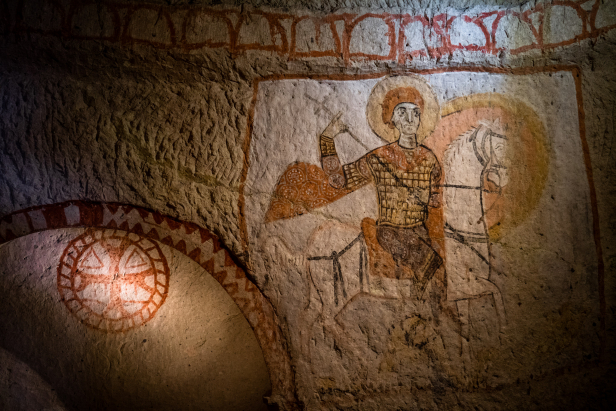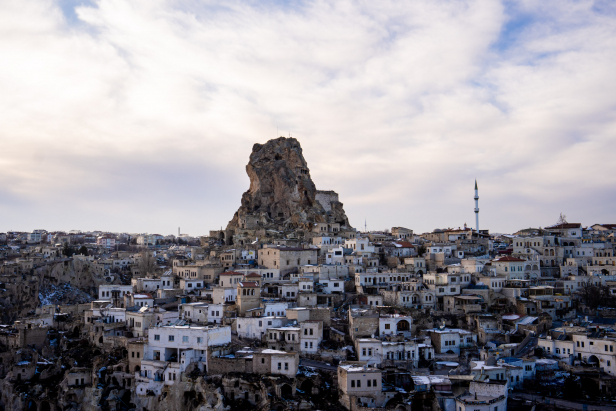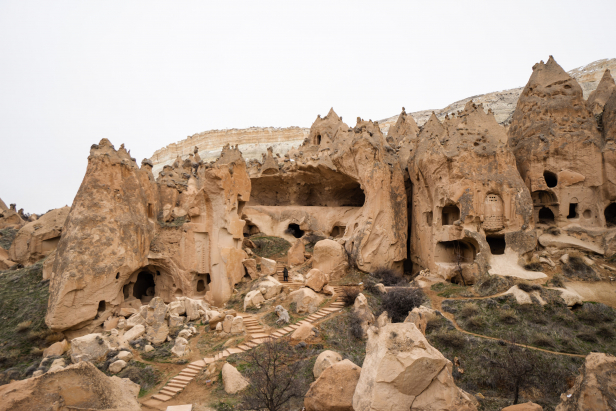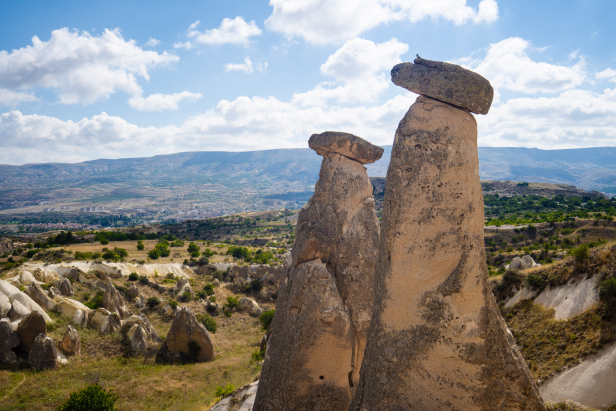Göreme National Park: The Heart of Cappadocia
/ By Josh
Cappadocia is a vast area packed full of stunning sights. There are over 200 underground cities, hundreds of churches, chapels, and hermitages, and countless valleys of strangle twisting shapes and towers. In the midst of all these amazing places, Göreme National Park stands out as the place that brings together the best of what Cappadocia has to offer in a relatively easy to explore package.
Göreme National Park consists of a cluster of hills and plateaus formed by Mount Erciyes and Mount Hasan, a pair of nearby volcanoes that covered the landscape with ash that hardened into volcanic tuff. Volcanic tuff is a soft stone, easily eroded by wind and rain. Over the course of millennia, the hills of tuff were carved by the elements into towers, cones, and stunning walls of white powder resembling great drifts of windswept snow.
From the time of the old Persian empire, the people of the region have taken advantage of the landscape and soft stone, taking shelter in the steep walled valleys and carving settlements into the rock.
Subscribe to The Art of Wayfaring
Today’s national park takes its name from the village of Göreme (a Turkish derivation of the Greek Korama) which sits in the center of the cluster of hills that make up the park. The history of this area before the Roman period is not well known. Erosion and the carving of new caves has not left much trace of the older settlements. One of the most important developments for the character of this area came with the arrival of christian monks. Anchoritic monks came to these hills and carved out hermitages for themselves. As Christianity’s influence grew, epsecially under the influence of St. Basil the Great, St. Gregory of Nyssa, and St. Gregory of Nazianus, more and more monastic communities were established. Around Göreme alone, dozens of churches were carved and built, some decorated with crude tracery done in red ink, while some had stunningly detailed frescoes added to them by later generations.
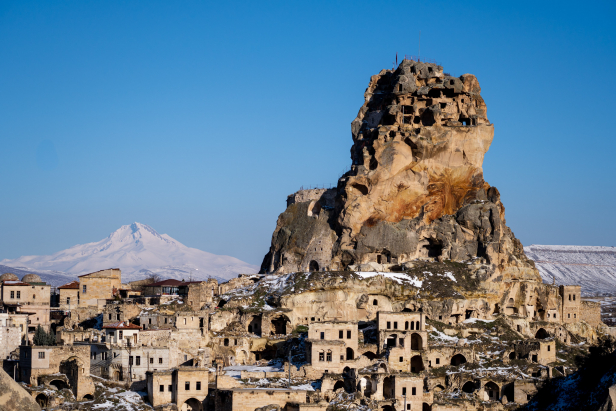
However, the communities surrounding Göreme were not simply religious, and the remains of wine presses, mills, and fortresses have also been found. From the 7th century onwards the region was plagued by Arab raids, making the fortresses and hidden settlements not just a matter of convenience but also survival. In the 11th century official control of the region passed to the Seljuk Turks though the Greek population continued alongside their new Turkish neighbours. Among the ancient Christian sites there are a number of historic mosques, and Islamic motifs are common in the towns and on dovecotes.
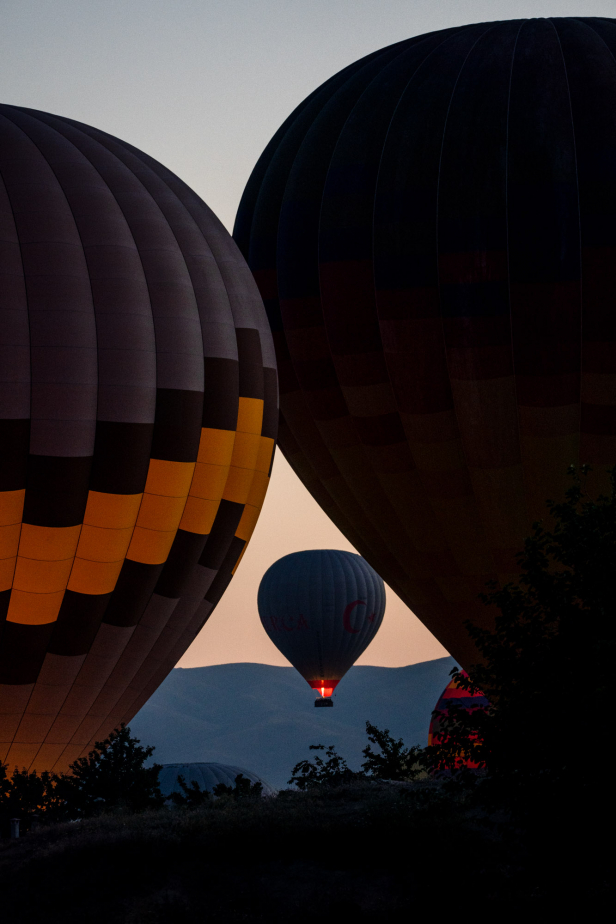
Why Visit?
Göreme Open Air Museum
(Göreme Açık Hava Müzesi)
Cost: 75 TL
(with a standard ticket entrance to the Karanlık Church is included. If you use your Museum Pass, you will need to pay a separate 30Lira entrance for the Karanlık Church)
By far one of the best collections of churches and monasteries can be found at the Göreme Open Air Museum, just outside of the Village of Göreme. With steep sided valleys of pail stone, fairy chimneys, and churches covered in stunning frescoes the Göreme Open Air Museum sums up much of what brings people to Cappadocia.
Entering the museum, the first site you will come to is the Chapel of St Basil (Aziz Basil), with its beautiful fresco of St George in the act of slaying a dragon with a cross headed lance. While the image of St George may feature as one of the finest in this church, there is a lesser fresco of St Basil the Great, one of the regions most important saints who was born in Ceasarea (Modern Kayseri)
Further along you will reach the Apple Church (Elma), and just beyond that the Church of St Barbara. The Church of St Barbara (Aziz Barbara) is remarkable for its crudely drawn images in red ochre. The art consists mostly of tracery patterns and crosses, though there is also a particularly unusual monster drawn here as well. The frescoes on the lower sections of the walls are of a much higher quality.
Continuing up the path past other rooms and graves in the rock you will reach the Snake Church (Yılanlı), named for the dragon who is yet again being slain by St George, this time with the aid of St Theodore. Of particular interest is the fresco of the naked saint Onuphrius, a hermit and one of the Desert Fathers of Egypt. Some guides say that he was a hermaphrodite, others that he was originally a promiscuous woman, though exactly where these stories have come from is unclear as the original history of his life has him being brought up in a monastery before spending the remainder of his days in the wilderness where he had a great beard and wore nothing but a loincloth.
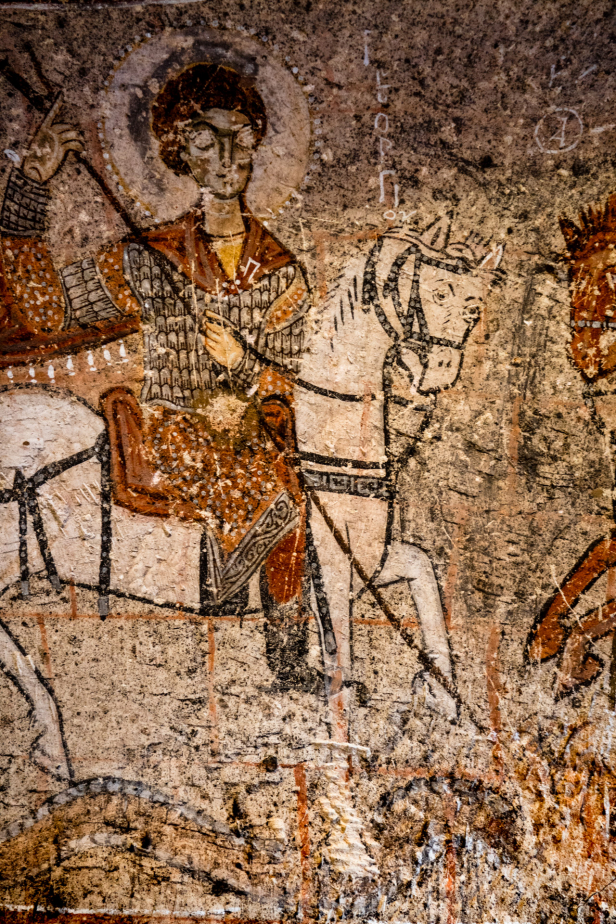
Continuing on, you will pass some small chapels, various other rooms, and refectories before arriving at The Dark Church (Karanlık), one of the most impressive in the entire museum. The church was part of a monastic complex, much of which has been lost to erosion and collapsing stone. The architecture of the complex was among the most ornate in Göreme Open Air Museum, though it’s really the frescoes inside that have visitors in awe today.
Containing some of Cappadocia’s most detailed and best-preserved frescoes, just about every surface of this church is covered in images of saints and biblical characters. While some restoration has taken place, the art of The Dark Church really owes its state of preservation to the fact that the doors and windows were bricked up to make for a dovecote.
Passing by yet more chapels and refectories, you will arrive at the Sandal Church (Çarıklı), which takes its name from a sandaled footprint in the floor of the church. The church is full of fine frescoes, the majority of which depict the life of Christ. Of particular interest is the scene of Simon the Cyrene carrying the cross, an uncommon theme in the art of the area. We can understand that it is not Jesus carrying the cross by the plain halo, whereas Jesus is otherwise depicted with a cross within the halo.
Leaving the museum itself and heading down the road you will come to the The Church of The Buckle (Tokalı), one of the largest and most architecturally impressive rock cut churches in the whole of Cappadocia. Access is included with the Göreme Open Air Museum entrance, so make sure to keep your ticket on you.
The Church of The Buckle is believed to have begun as a simple hermitage. You can still see the simple chamber on the left when you first enter. The first large space is the original Church of the Buckle, which now serves as the church narthex. This a large, though simple barrel vault with frescoes depicting the birth, life, and death of Christ in a series of panels. Below the old church is a lower room that, though architecturally interesting with columns and niches, is small and plain with graves cut into the floor and walls.
Beyond the old Church of the Buckle is the astounding new church, built in the 10th or 11th century. The nave is a large transversal barrel vault with a screen of pillars obscuring the three apses in the east wall. The north and south walls are carved with blind niches and nearly every surface of the church is covered in stunningly life-like frescoes depicting scenes of Biblical and early church history. Entered through a set of archways in the north wall is a parekklesion (side church).
Village of Ortahisar
(Ortahisar Köyü)
Cost: 30TL
(Fee is for fortress access)
Ortahisar is the quietest of the few towns and villages that surround Göreme National Park. Its name, meaning “Middle Fortress” comes from the twisted tower of rock that rises from the midst of the village to height of 86 meters, commanding a stunning view of the surrounding countryside. The tower is riddled with tunnels and rooms; climbing up through these you can reach the top of the Ortahisar Fortress and see the view for yourself. At the foot of the fortress is a small restaurant, the lower level of which is a wine-tasting room occupying the lower levels of the fortress itself. (The tunnels and walkways of the fortress are rather precipitous and not recommended for small children.)
From across the valley to the south is a small collection of tea houses and tourist shops with an absolutely stunning view of the village with row upon row of old stone houses stacked up from the valley floor to the foot of the fortress itself.
Cappadocia Balloon Rides
(Sıcak Hava Balonu)
Cost: Varies
(Price varies depending on the package, season, and company you hire.)
Whether you come to watch the brightly coloured hot air balloons rise out of the landscape and gently drift overhead or get in one yourself and watch Cappadocia’s other-worldly landscapes pass below your feet, the hot air balloons of Cappadocia should be on your must-see list for any visit to the area. Balloon rides can be arranged through your hotel or directly with the company itself. As the direction the balloon takes and its landing place is dictated by winds, you will usually be picked up early from your hotel and dropped off again. Some packages include breakfasts at sunrise in the air or at local restaurants.
Village of Ürgüp
(Ürgüp)
Cost: Free
By far the largest of the towns in Göreme National Park, Ürgüp is where you’ll find most locals hanging out. Ürgüp is less about sightseeing and more about tasting Cappadocia. It’s your best destination to try local dishes in some of the area’s top restaurants. There are wine houses serving local vintages, and a selection of the top hotels in historic mansions and caves.
Ürgüp is also the best destination for more of your practical needs. Here you’ll find some of the larger markets as well as the offices of various tour operators such as guides, ATV tours, horseback tours, and safaris.
Valleys of Göreme National Park
(Göreme Milli Parkı Vadileri)
Cost: Varies
(Price varies depending on the valley and how you enter.)
One of Cappadocia’s many draws is the network of walking trails that connect the towns and villages by quiet paths through the dreamscape of Cappadocia’s amazing rock formations. You can also access many of the area’s valleys by car if you’re not up for longer walks. It can be rather complicated to sort out which valley is which as many of them interconnect, so if you have your heart set on a particular route you may want to ask about a guide or do a little bit of scouting before you set out.
Another popular way to explore these valleys is by horse or ATV tour. Tours are arranged by private operators.
Some Highlight Valleys include:
Imagination Valley (Devrent Vadisi), a valley of many smaller rock formations packed tightly together on the north-eastern edge of the park. Along the side of the road is the popular “Camel Rock” a natural formation that closely resembles a camel.

Pigeon Valley (Güvercinlik Vadisi), a beautiful valley famed for its churches, dovecotes, and its view of the town of Üçhisar. This valley runs to the south of the town of Üçhisar along Adnan Menderes Street. Watch your head though, the pigeons are numerous enough that you may just get pooped on.
Red Valley (Kızıl Vadisi) and Rose Valley (Gül Vadisi) are really two parts of the same stretch of valley, both named for the reddish-pink hue of the rock here. The valley runs from near Çavuşin to the south-east towards Ortaköy with beautiful landscapes, monasteries, and churches to visit along the way. There are a number of points to enter the trail along the way and, depending on where you enter, there may be an entry fee.
Love Valley (Aşıklar Vadisi), a valley running north-south to the west of Çavuşin and north of Üçhisar and famous for its many, rather phallic, fairy chimneys.

Sword Valley (Kılıçlar Vadisi), rather than the tall, narrow, rock formations seen in other places around Göreme, the rock formations here are shorter and thicker resembling sword points rising up out of the ground. Throughout the valley you’ll find tunnels, churches, and numerous chambers cut into the rock. The valley runs from the north of Göreme Open Air Museum towards Çavuşin, roughly parallel and to the west of Red/Rose Valleys.
Zelve Open Air Museum
(Zelve Açık Hava Müzesi)
Cost: 50 TL
(Müze Card accepted)
Occupying three valleys that meet at the edge of the plain, the Zelve Open Air Museum began as a monastic community in the 9th century. The monks and later inhabitants of the town cut their homes, churches, mills, wineries, and other buildings into the sheer rock of the valley walls. All throughout the site the little black squares of windows and doors open up from all heights and directions. Some of the churches here still bear beautiful frescoes and engravings.
Dovecotes with Ottoman Turkish written in Arabic script, and a historic mosque bear witness to the changes in Zelve’s population from Greek Christian to Ottoman Turk. The site was finally abandoned in the 1950s when the cliffs became too unstable and unsafe for inhabitation. You can see large boulders and massive stones littering the valley floor when they sheered away from the cliffs.

The Village of Göreme
(Göreme Köyü)
Cost: Free
The Village of Göreme is right in the heart of Göreme National Park making it the best place to be based out of if you plan on getting around on foot, taxi, or minibus. It is home to boutique hotels, restaurants, campgrounds, cafes, and the always important ATMs. Being in the center of the National Park also puts it close to the hot air balloon take off site, making it a great spot to watch the balloons rise from the landscape and float across the skies. Unlike Çavuşin, Üçhisar, and Orthisar, the village itself is not the attraction.
Village of Çavuşin
Çavuşin Köyü
Cost: Free
Near the center of Göreme National Park, the village of Çavuşin is home to a pair of fine rockcut Churches, and a classic village of stone houses, now mostly abandoned, all set beneath a high cliff of looming stone. The lower village is newer and home to locals, a school, and shops, while the upper village nearer the cliffs is where you’ll find shops selling pottery, antiques, and other souvenirs.
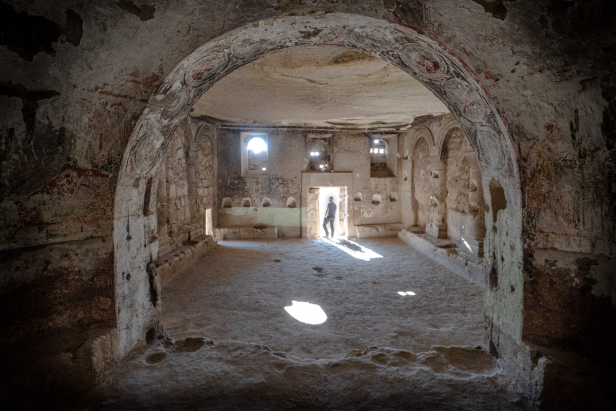
At the north end of the village, just off of the Avanos-Göreme road is the Çavuşin Church, a relatively small, single-naved church with detailed frescoes on its vault and apse.
Cut into the cliff above the village of Çavuşin itself is the Church of St John, a large, three-aisled church with the faint traces of frescoes on the ceiling. The three aisles of the church are now divided into separate rooms as the space between the pillars has been filled in. Normally you can reach the church of St John at Çavuşin by climbing up through the old village and taking a small wooden walkway to the church entrance. If this walkway is missing (as has happened) then accessing the church can be rather difficult and climbing from directly below the cliff may be easiest.
Village of Üçhisar
(Üçhisar Köyü)
Cost: 50TL
(to enter the castle and access the top)
Centered on a 60-meter-tall rock formation the town of Üçhisar crowns a low hill and can be seen from all over the Göreme National Park. The town is home to beautiful neighborhoods of old stone buildings, cafes carved into towering cones of rock, tourist shops, antiques sellers, and a good selection of hotels. It’s for good reason that Üçhisar is one of Göreme National Park’s most popular places to stay. A visit to the castle takes one through galleries and tunnels carved in the soft rock until you reach the top with its stunning views of Cappadocia’s fairy-tale landscapes. On the western side of the castle rock is a valley of small, tilled fields and rock formations: a patch of rural life right next to the hubbub of the busy town.

One of the best views of Üçhisar is from Pigeon Valley, just to the south of the town itself where you can see the old stone houses descend like a terrace down into the valley floor.
Monks Valley/Paşabağı
(Paşabağı)
Cost: 65TL
Just to the west of Zelve, this is one of the area’s most beautiful valleys with dramatic rock formations at the foot of Göreme’s highest butte. The formations here are like tall pale pillars wearing dark conical caps clustered close together. The name “Monks Valley” is in reference to St Simeon who was said to have lived here as a hermit until his peace was disturbed by visitors and disciples who had heard of his miracles. This is one of the busiest of the valleys on this list and quite a bit smaller, excellent if you’re looking for a short rather than long walk.
The Three Beauties
(Üç Güzeller)
Cost: Free
At the crest of a hill between the towns of Ürgüp and Ortahisar are the ever popular Three Beauties rock formations. Standing close together are three tall towers of soft white stone, each balancing a round cap of darker stone like some large hat. Tourist shops abound near the parking lot.
Scattered Churches
Diğer Kiliseler
Cost: Varies
Beyond the museums and named valleys, Göreme National Park is home to numerous other churches. Churches such as Aynalı Monastery, El Nazar Church, Pillared Church, and many others. Many of these will be quiet even when the park is full during high season as they are a bit more difficult to find or not on the normal tour itineraries.
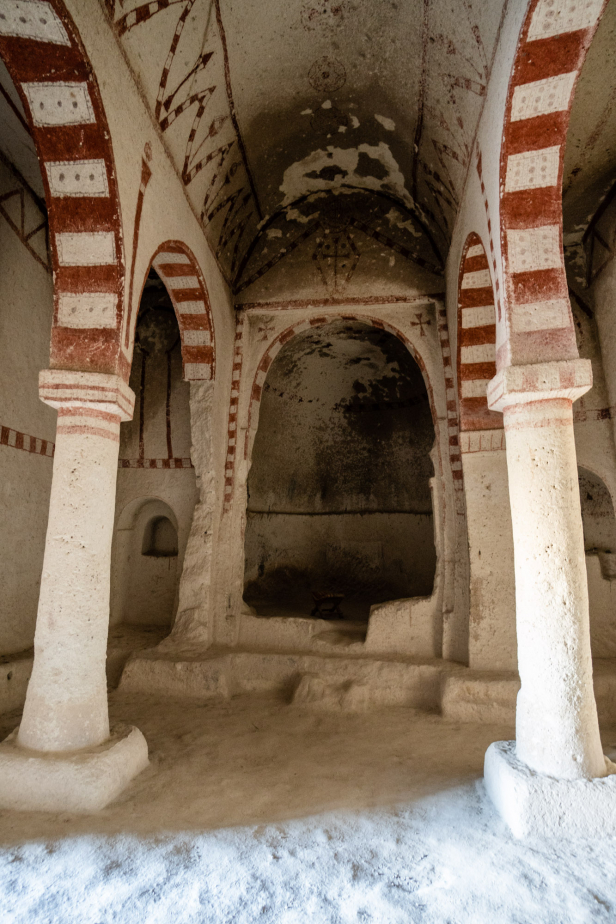
How To Get There
General:
One of Turkey’s most popular attractions, Cappadocia, and especially Göreme National Park is well connected. There are two airports near Göreme: the Kapadokya Airport in Nevşehir and the Kayseri Airport in nearby Kayseri. Kayseri Airport tends to have more flights than Nevşehir Airport though it is a bit further.
There is excellent inter-city bus connection to Kayseri and Nevşehir from all over the country and regular shuttles and minibuses from the bus terminals to the towns of Göreme.
If driving is more your style it will allow you to access some of the more out-of-the-way sights of Cappadocia without haggling with taxi drivers over prices and times.
For more about car rental and driving in Turkey make sure to read our full drivers guide.
Where To Stay
When it comes to accommodation, there is no lack of options around Göreme. The villages of Ortahisar, Üçhisar, and Göreme are right in the midst of the National Park and have good selections of hotels, hostels, and fine cave hotels. In Ürgüp you’ll find a wider selection of the same plus some apartments for short-term rental. Going a little further afield you will also find a wide range of hotel options in Nevşehir and Avanos.
Scattered throughout the area are campsites, though you should be prepared for cool nights even in the heat of summer.
Other Tips
While most pictures of Cappadocia show sunny skies and fields of grass turned yellow by the hot sun, Cappadocia can get quite cold. From December to March, you stand a good chance of getting snow, though, on the plus side, the sites will be quiet and tourists few. Mid summer gets fairly hot (about 30-35 degrees), though at night the temperature will still drop to 10-15 degrees.
Planning on visiting Göreme National Park? Make sure to check out the other great sites of Cappadocia and Central Turkey! Looking for a little more greenery? The Ihlara Valley combines the beauty of Cappadocian cave churches with the garden-like atmosphere of the forested canyon.
Subscribe to The Art of Wayfaring
Have any tips or info to add? Spot any mistakes? We’d love to hear about it.
